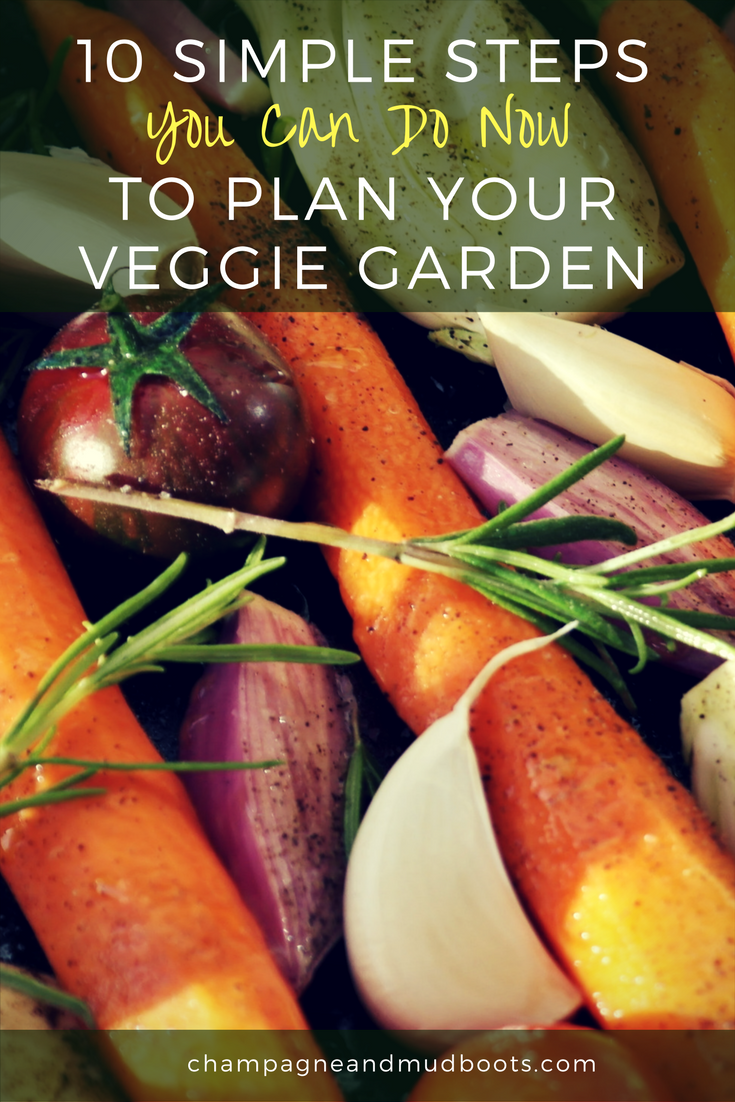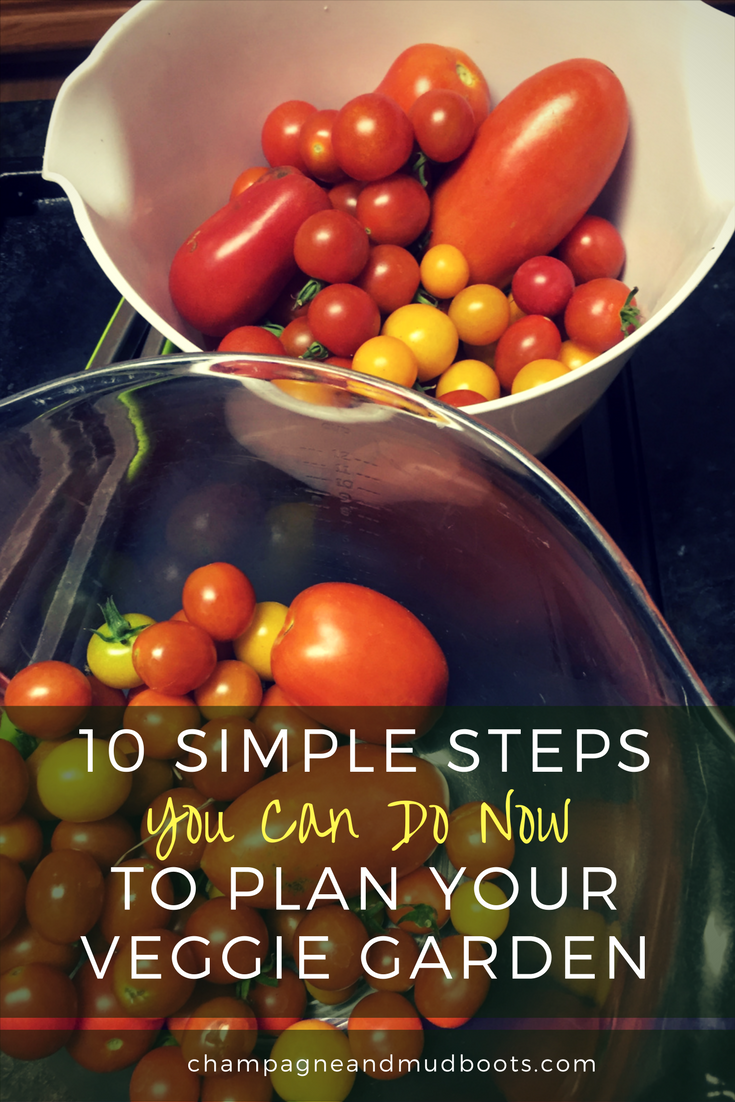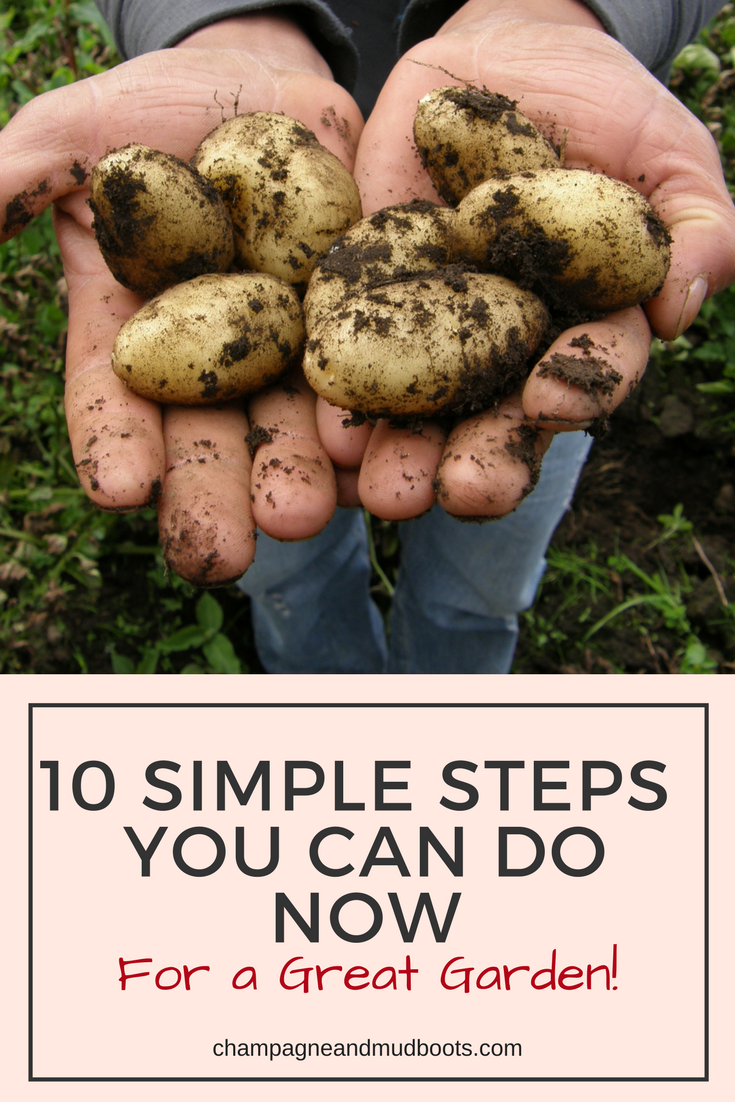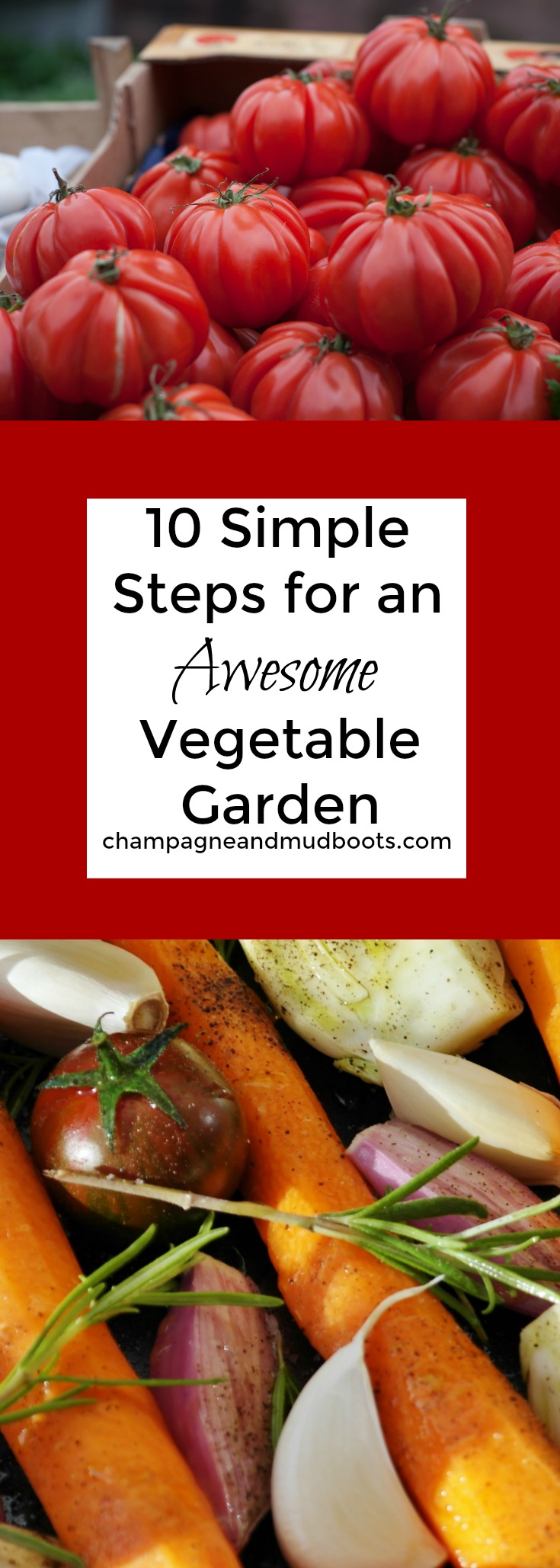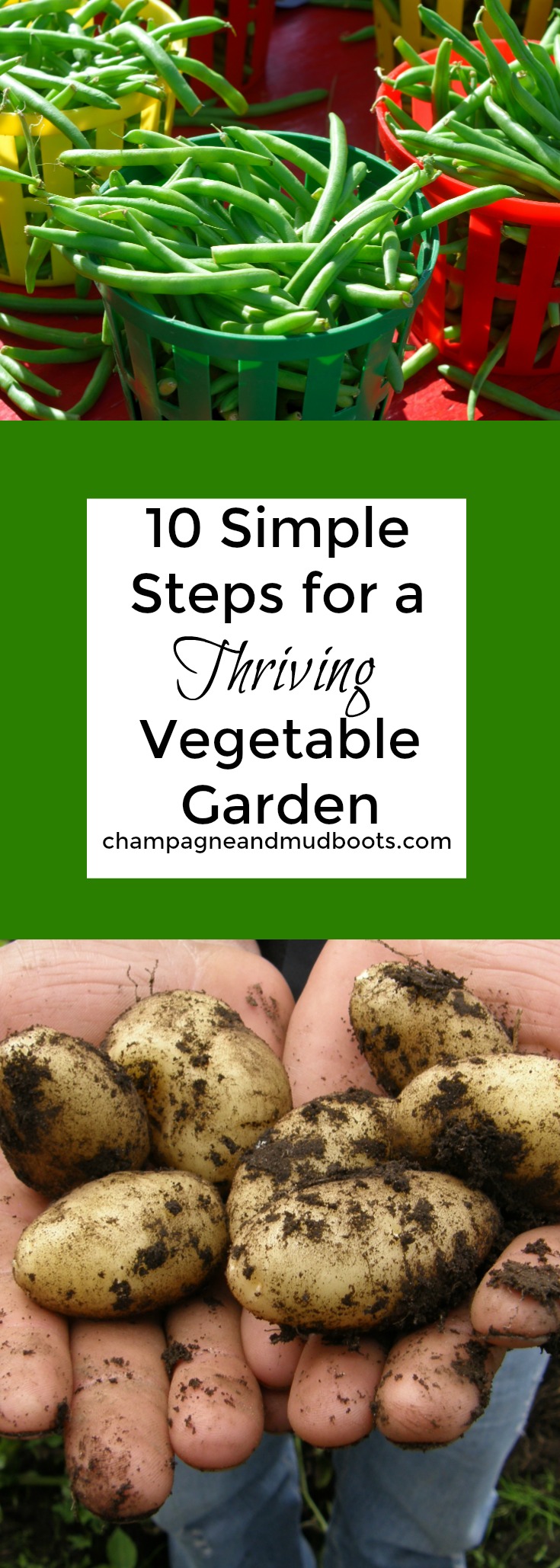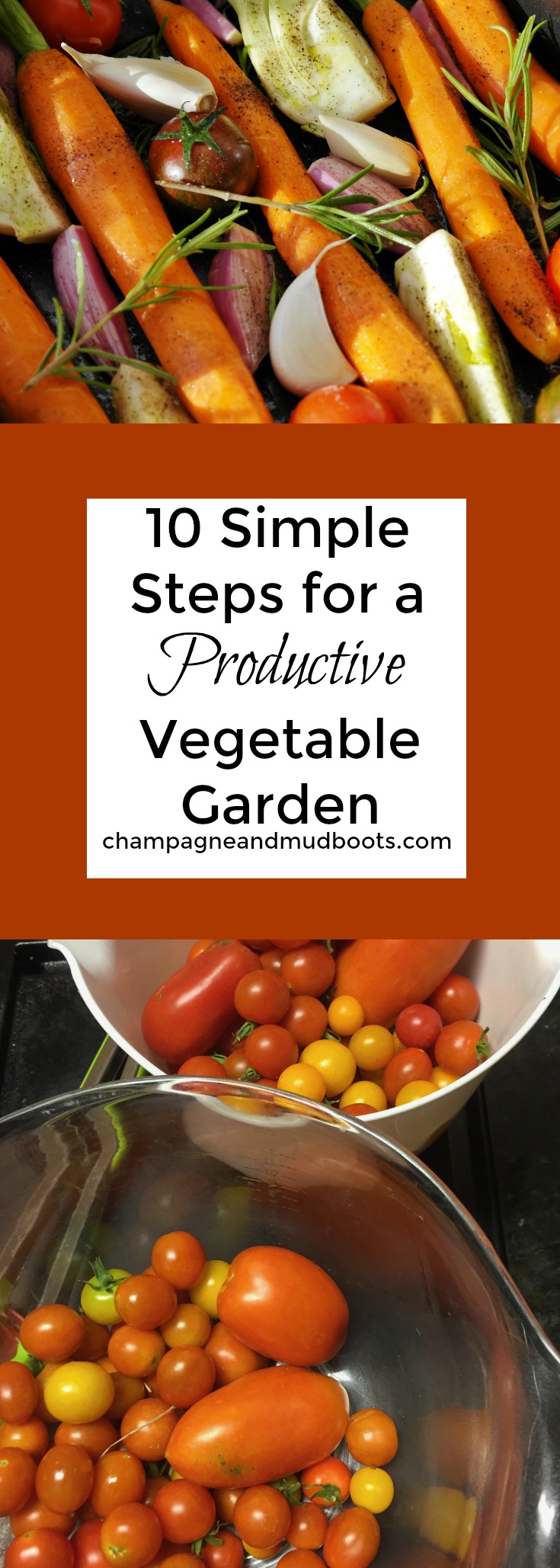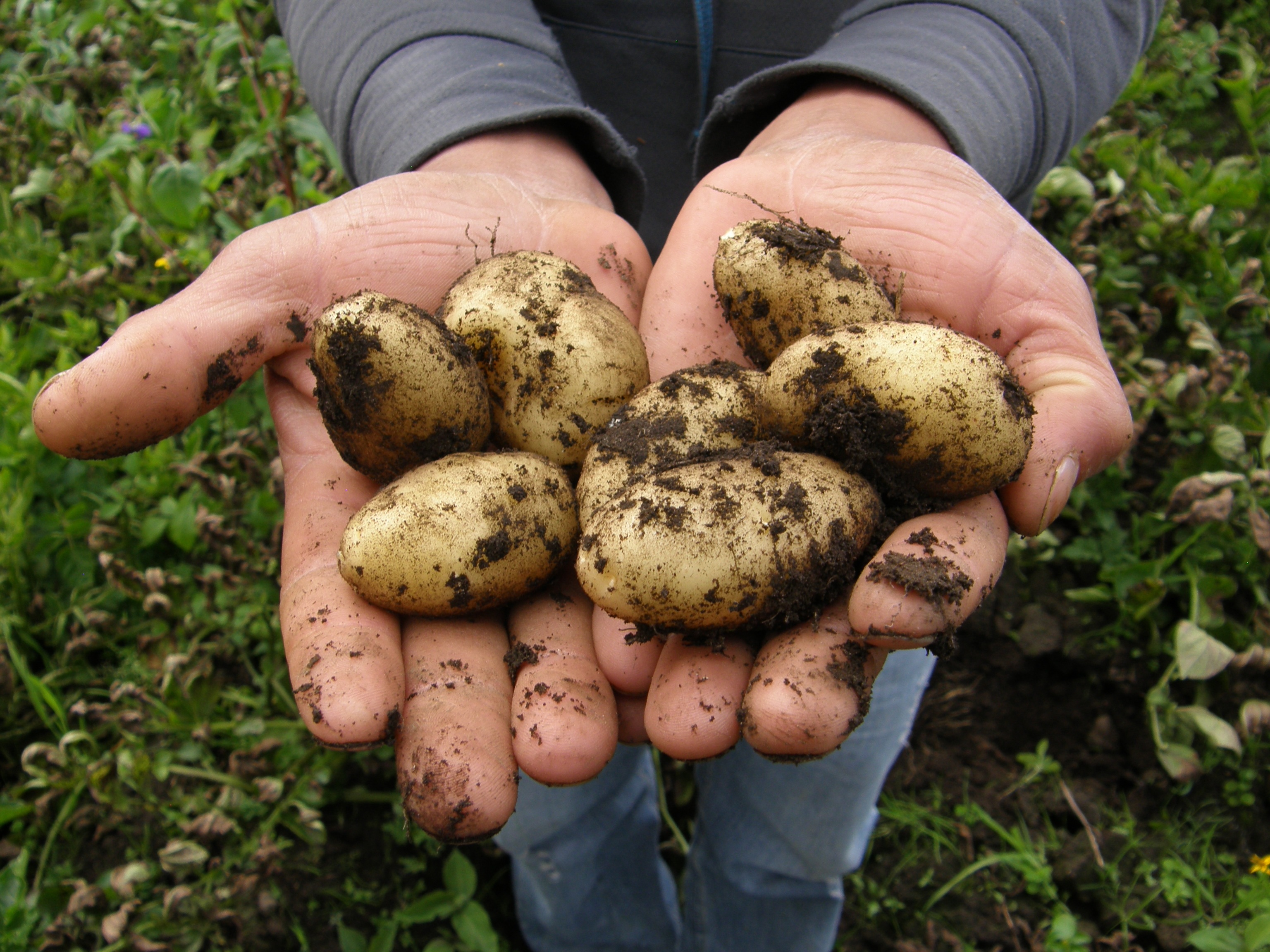 When you are just starting out with a vegetable garden a little planning goes a long way. You can see what happens when you don’t plan by reading my post the Top 6 Mistakes I Made as a Beginning Gardener. Since, I’m making a plan this year I thought I’d share these simple steps for a vegetable garden so you can have a thriving veggie garden even if you are a beginner.
When you are just starting out with a vegetable garden a little planning goes a long way. You can see what happens when you don’t plan by reading my post the Top 6 Mistakes I Made as a Beginning Gardener. Since, I’m making a plan this year I thought I’d share these simple steps for a vegetable garden so you can have a thriving veggie garden even if you are a beginner.
(Hey, this post may contain affiliate links. This means, with no additional cost to you, I just get a small portion of the proceeds if you click on the link and purchase the item. It’s a simple way to support this content without extra obligation! This includes letting you know “We are a participant in the Amazon Services LLC Associates Program, an affiliate advertising program designed to provide a means for us to earn fees by linking to Amazon.com and affiliated sites.” (Please see the disclosure policy for further information)
Step #1 Don’t Over Extend Yourself
Seriously, I get it. You look at the seed catalog or up at the seed wall in the store and get all starry eyed and having visions of children plucking their own giant pumpkins and cute little gourds. And you see heirloom tomato and corn that has been saved by seed collectors. It’s intense and addicting, but remember you have to take care of all of those plants and keep them watered and weeds plucked. Don’t let your eyes get bigger than the amount of time you really have to care for it. Sure a whole litter of puppies sounds great until you are scooping poop for 8! While the whole idea is to produce food it should be fun in the process and overwhelming yourself is guaranteed no fun.
Step #2 Decide on a Bed Type
Are you doing in ground beds – advantage may need less watering and they stay cooler than a raised bed but weeds have an easier time invading an in-ground garden. Raised beds have the advantage of possibly less weeds especially if raised significantly, but they may need excessive watering if you live in a hot place such as Texas.
Step #3 To Till or Not to Till
This is for those choosing an in ground garden versus the raised bed approach. Choose if you are going to till up the ground or if you are going to try a no-till method such as Ruth Stout’s method which can be found at Gardening Without Work: For the Aging, the Busy, and the Indolent.
If you have pasture or backyard that you are wanting to turn into a garden and you didn’t prep the season before with a lasagna garden or just laying down cardboard to kill the grass then tilling may be your only real option. It takes a long time, as in 6 months depending on the climate, for cardboard to break down.
Tilling is a method that is relatively quick and gets you to your bare dirt goal. It’s easy to rent a tiller at your local home depot and the method works or people wouldn’t have been doing it for forever. My Mom talks about my grandparents tilling the garden every year and it seemed to work out fine.
However, tilling will destroy soil ecosystems including important fungal hyphae and earthworms that help you produce better plants. Over time a no-till system can be a smarter choice for soil health. Generally, gardeners overcame the downsides of tilling by adding in lots of compost and chemical fertilizers to compensate for the losses.
The reality though, is sometimes you run out of time so if you decide to till this year I won’t tell!
Step #4 Consider your Soil
If you are doing a raised bed you will be adding all of your soil so you can do combinations of topsoil, compost, perlite, or other components. Square Foot Gardening as in All New Square Foot Gardening II: The Revolutionary Way to Grow More in Less Space is the gate way drug into gardening. Seriously, if you are a beginner gardener or considering a garden in a small space check it out. It has the Mel’s Mix recipe but there are cheaper ways to go about it especially if you are doing multiple beds. Some garden supply places will let you buy by the truckload versus individual bags which is helpful if you are doing a large number of raised beds.
If you are using the soil from the ground you can test with in home kits like the one above or send it out to a lab to see if anything is lacking from the soil or if you have an excess of certain nutrients. This allows you to add only what your soil needs rather than dumping in components that may make the situation worse or make for an added unnecessary cost.
In addition to components such as nitrogen and phosphorus the pH of your soil can affect how well certain plants grow. For example, if you have very alkaline soil you are going to have a rough time growing blueberries unless you just put them in a pot with the acidic soil that will make them happy. Just average soil can benefit from compost though to provide extra nutrients for your garden.
You also need to be concerned with the type of soil. Is it sandy, clay soil or silt? Silt is what you want since too much in either direction can make water management challenging. Check out this page from Clemson for tips on how to amend the different types of soil to get the perfect soil mixture.
Step #5 Develop weed control solutions.
Raised beds can have less weeds but you will still spend time pulling them. Paths made with cardboard or weed block will help. I used weed-block last year and while it helped it certainly does not block all weeds and it is amazing to pull it up and see how the grass roots were still fighting to live and locking themselves into the weed-block! It was a total hassle to pull up. Mulch is a great way to protect your plants and keep weed invaders out. Various types of wood, straw or hay could be considered.
If you are tilling the ground you may be shocked by how quickly the weeds start trying to undo your hard work. Plan accordingly to get your plants and seeds in as soon as possible.
Step #6 Know Your Zone – Choosing Plants
You definitely want to make sure that the varieties you choose are ones that will do well in your growing Zone. Just because Home Depot sells it doesn’t always make it the best plant for your environment. Once you know what will grow near you should think about do you even want to grow it. Sure, some plants are just for funsies, but if no one in your household eats okra it doesn’t matter if you can grow bushels of it. Unless, you want to sell it or give/barter with the neighbors in which case okra may sound better and better.
Step #7 I Need Some Space!
The cute little seed packets give recommendations for spacing of the plants and in general they aren’t just making stuff up. If you are doing an intensive square foot gardening scenario the plants are growing in closer proximity but the soil in raised beds is usually optimized. Fair warning, if you squish them in it starts getting crowded pretty quickly. Any type of vining plant like pumpkin, watermelon, or cantaloupe takes up a massive amount of space! Their twisting tentacles stretch out winding their way around blades of grass, your tomato cages and anything else in their path like a ravenous octopus. It’s interesting from a biologic perspective but may not be as interesting when it takes over your whole garden.
Step #8 Don’t be Vertically Challenged
The solution to out of control vines can be to set up trellises in the garden. You can even trellis heavier fruits like cantaloupe and watermelon but these may need a support system for the fruit once it gets large. Check out my post on 14 Easy DIY Trellis Ideas for some inspiration! Trellises let you increase your production in a smaller space and make harvesting easier since you aren’t bending over searching the ground for produce. Some people will use corn stalks as a trellis for their pole beans by waiting until the corn is at least a foot high before planting the beans. Double the crops in the same space!
Step #9 Map it Out
It helps to sketch out on graph paper where you want everything planted and how it will fit in the garden so that plants that need more sun are getting it and vice versa for those needing more shade. You can make a sun map by monitoring hourly where the sun hits the areas of your garden to see how much it gets during the day however doing this in the winter won’t give as accurate results as your Summer numbers. I tease my husband about his graph paper but sometimes it’s helpful for planning sake.
Step 10: Devise a Water Strategy
This is pretty climate dependent. If you have very hot summers you are going to have to water much more frequently than places that have steady predictable rains. You can hand water all the plants, rely on sprinklers, use soaker hoses or some type of drip irrigation. Some of these water solutions can attach to rain water catchment systems and run on timers. You do have to monitor the weather and timers though so you can make adjustments based on rainfall. In general you will waste less water with soaker hoses and drip irrigation and some plants such as tomatoes you don’t necessarily want to be getting water all over the plant, anyway.
If you can implement all of these steps you will likely have a thriving vegetable garden. Even if you don’t do most of it you can check out my post Top 5 Reasons to Grow a Garden as proof that things will probably work out at least ok anyway, even if it isn’t spectacular. If all else fails just get out there and start playing in the dirt. Remember “don’t let perfect be the enemy of good” or choose some of these 10 Easy to Grow Vegetables to make you feel like a master gardener even if you are a beginner! Happy planning and planting!
